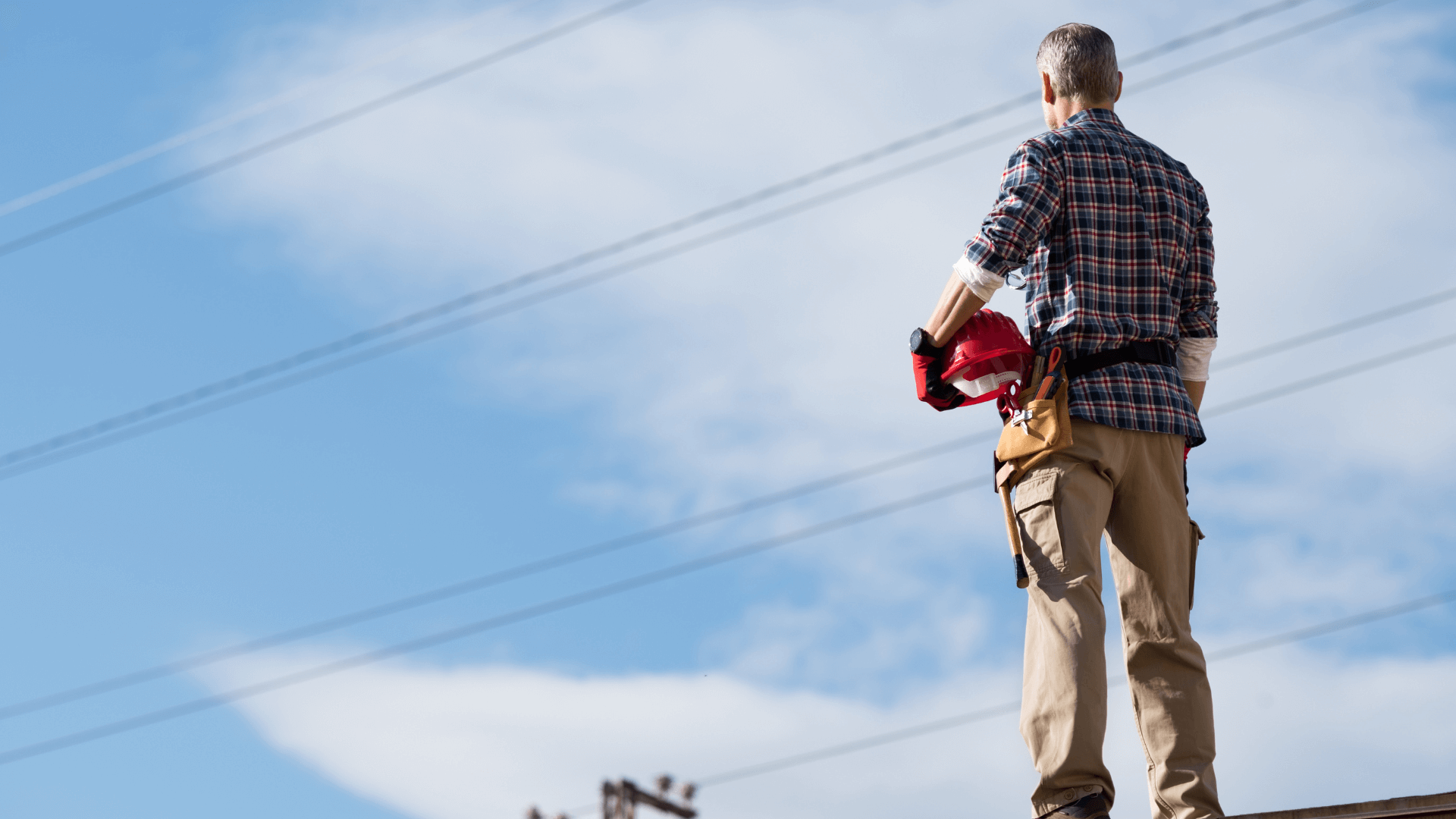The dangers of getting too close
A young second-year electrical apprentice died when his elevated platform was set up under powerlines. Aluminium rods the apprentice was holding, entered an exclusion zone touching overhead powerlines or coming close enough for the electricity to arc over.
In 2019, a 24-year-old man carrying out work on a rooftop died when he brushed against electrical wires while holding a metal pole. His four co-workers were rescued from the roof with one man taken to hospital suffering burns to his legs.
These stories highlight the importance of exclusion zones when working near live electricity.
Stay safely away
Even coming close to powerlines can cause the electricity to arc and jump. You don’t need to make contact with powerlines to cause the electricity to arc and jump; being in close proximity is enough. While working, always remember that exclusion zones are the minimum distances that need to be observed to work safely.
Exclusion zones are designed to protect workers and the public. They are put in place to show the safe working distances surrounding electrical assets. The size of an exclusion zone is determined by the voltage of the electrical equipment.
Find out more about exclusion zones.
Keep Out of exclusion zones
Under no circumstances can a person, plant, or material enter the exclusion zone of an electricity powerline or electrical asset.
Prosecution & liability
If your works enter an electrical exclusion zone, you may be prosecuted and be liable for any damage to the electricity network.
Before working near powerlines
Safe work practices are designed to help keep you and your team out of danger when you're on a job site.
- Conduct a risk assessment and an on-site inspectionDetermine if works can be completed without entering exclusion zones. Keep in mind, even though exclusion zones signify the minimum safe distances, the best way to stay safe is to maintain the greatest possible distance from powerlines.
- Consider the optionsIf works cannot be completed outside of exclusion zones, contact the local electrical distributor and take appropriate steps to complete the works safely.
- Have a safety plan in placePlans can include the appointment of a dedicated safety observer, using signs on work sites, and installing tiger tails (an effective visual aid for the prevention of electrical accidents - contact your electricity distributor for more information) as visual indicators of overhead powerlines.
- Determine if a Safe Work Method Statement (SWMS) is requiredSWMS are required for high risk construction work under the Work Health and Safety (WHS) Regulation 2017.
How would you respond to an electrical emergency?
If a co-worker receives a serious electric shock, instinctively, your reaction will likely be to go to their aid. However, you should first stop and consider the danger before assisting.
- Don’t approach anyone receiving an electric shock. The electrical current could easily pass to you.
- Call 000 and follow the advice from Emergency Services.
- Stay at least 8 metres away from fallen powerlines. You can’t see or hear electricity, making powerlines seem benign, when they're actually live.
- Metal ladders and scaffolding are conductors of electricity. Even coming close to electric wires with a metal object could cause the electricity to arc and jump.
- If a vehicle or machinery has touched or collided with powerlines, passengers should remain inside the vehicle. It’s the safest place to be.
- Never attempt to pull a tree or branch away from powerlines as trees and foliage can conduct electricity given their sap and water content.
What should you do if you find yourself within 8 metres of fallen powerlines?
- Stop. Don’t move.
- Never walk or run away from the situation. It could cause the electricity to flow up one leg and travel to the other potentially causing severe injury or death.
- Call emergency services if you can reach your phone without moving your feet. If you’re unable to call 000, ask someone to report the incident for you.
If you’re in immediate life-threatening danger by staying where you are, slowly shuffle away from danger without moving your feet more than a few inches at a time. Always keep both feet in contact with the ground to reduce the difference in voltage between your feet as you move.
Why Shuffle?
When shuffling away from electrical danger keep your feet close together and in contact with the ground to minimise voltage differences between the two points of contact (your feet) and the energised surface. Whenever there is a voltage difference between one point and another, a current will flow. It is the flow of electricity (the current) that can cause severe injury or death.

Look up and live
Legislation, standards, and codes of practice
To keep you, other workers and the community safe, legislation, standards and codes of practice must be followed when working near electricity. Non compliance could result in prosecution, fines and the loss of skilled staff.
Work Health and Safety (WHS) requires management of risks that impact the health and safety of everyone in your workplace. For businesses, this includes anyone who works for you, as well as your customers, visitors, and suppliers.
